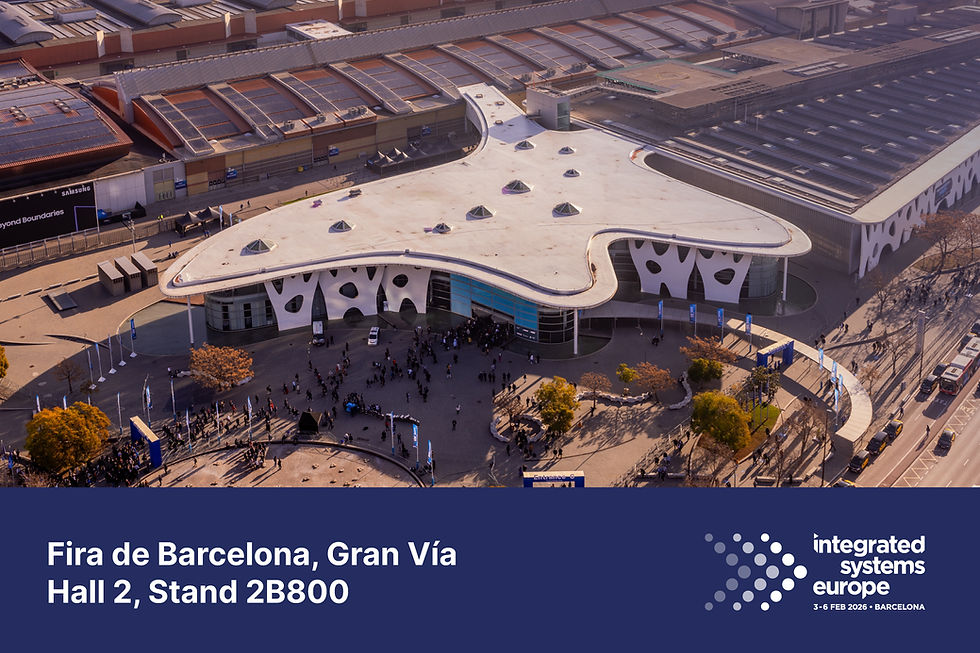More News
.jpg)
1/7/2026
Empowering the Connected AV World with Teltonika at ISE 2026

1/7/2026
New PTCRB, FirstNet, and Carrier certifications for our 5G devices in North America

12/3/2025
RutOS 7.19 firmware update: the latest enhancements
SUSTAINABLE IOT: REDUCE POWER USAGE & INCREASE EFFICIENCY
31 January 2024
IoT has revolutionised our interaction with technology, providing benefits across many industries. One of the most recognised areas of IoT is the potential to reduce power consumption in several ways, primarily by improving energy efficiency and optimising resource usage in different industries and applications. While creating network solutions for individuals and organisations, IoT contributes to reducing power consumption by increasing power efficiency.

How can you create a sustainability-focused network solution?
It’s not that difficult! In order to successfully create a network solution, it’s important to choose the right IoT device. We’re constantly updating our use cases and publishing new sustainability articles on our website, where our devices take part in solving all kinds of challenges.
IoT helps reduce power consumption by escalating efficiency:
1. Creating energy-efficient devices

IoT companies create devices with energy efficiency in mind, using low-power components and technologies. This ensures that the devices themselves consume less power. The Energy Efficiency — Moving Towards a Sustainable Office use case presents how to create a more sustainable office environment.
A great integral part of the network solution for building management systems (BMS) is a network connectivity device that supports heavy data traffic and ensures continuous network supply.
Thanks to our RUTX10 industrial Ethernet router, BMS can gather large amounts of data about employees’ power consumption habits and schedules, analyse it, and control the power supply accordingly. This network solution provides sustainable IoT services by reducing power consumption and improving energy efficiency in the office.
Moreover, this industrial router is packed with an embedded firewall and multiple VPN services, such as IPsec, ZeroTier, PPTP, L2TP, Stunnel, DMVPN, and SSTP. These security measures allow for establishing a safe, encrypted connection and providing remote management.
2. Predictive maintenance

IoT sensors and meters can be deployed to monitor energy consumption in real time, providing valuable data to consumers and organisations. This data allows for better decision-making and identification of energy-wasting areas that can be optimised for energy savings. These network solutions can be successfully integrated into the agriculture sector.
Greenbox Farms, a Dutch innovator specialising in sustainable agriculture, brings new life to old spaces. It transforms old shipping containers into farms that integrate a range of smart devices and systems to support efficient and sustainable agricultural practices. Moreover, these farms rely on advanced technology, such as climate control systems and cloud-based crop management software, which allows them to grow produce more effectively.
For this operational flow to work smoothly, the solution needs reliable connectivity as a vital component. Our industrial cellular router, RUT241, ensures continuous and uninterrupted operation while providing reliable LTE Cat 4 connectivity, WAN failover, MQTT support, I/O customisability, and remote management capabilities.
This cellular Wi-Fi router has a wide variety of I/Os, making it highly customisable and open for integration of additional devices in the future. Finally, compatibility with the Remote Management System (RMS) of Teltonika Networks allows remote management and monitoring efficiency, providing easy control of all your RMS-compatible devices by Teltonika Networks.
3. Home and industrial automation

IoT-enabled smart homes can help residents manage their energy consumption more efficiently by automating lighting, heating, cooling, and appliance control based on user preferences and occupancy. IoT-enabled industrial processes can be optimised for energy efficiency by remote monitoring and controlling machinery and processes in real time, minimising energy waste.
To harness the data collected by smart sensors on utility usage in any property, an IoT solution must be in place to send the data from each meter to the cloud server of its supplier. The M-Bus Smart Submetering for Property Utilities use case shows how our TRB143 industrial gateway connects different meters to different utility services.
In addition to this, the TRB143 comes with the M-Bus interface, which allows it to transfer telemetry data from up to 250 powered meters over a 4G network. Moreover, it also can power up to 6 meters over M-Bus. Lastly, this cellular gateway protects data transfer with a wide sphere of software security features, allowing data transfer to perform without issues or interruptions.
The right choice is here
As you can see, sustainable IoT is not that difficult to achieve. Teltonika Networks offers a variety of products that suit different needs and requirements. If you would like to know more about network solutions, contact us by clicking the button down below!